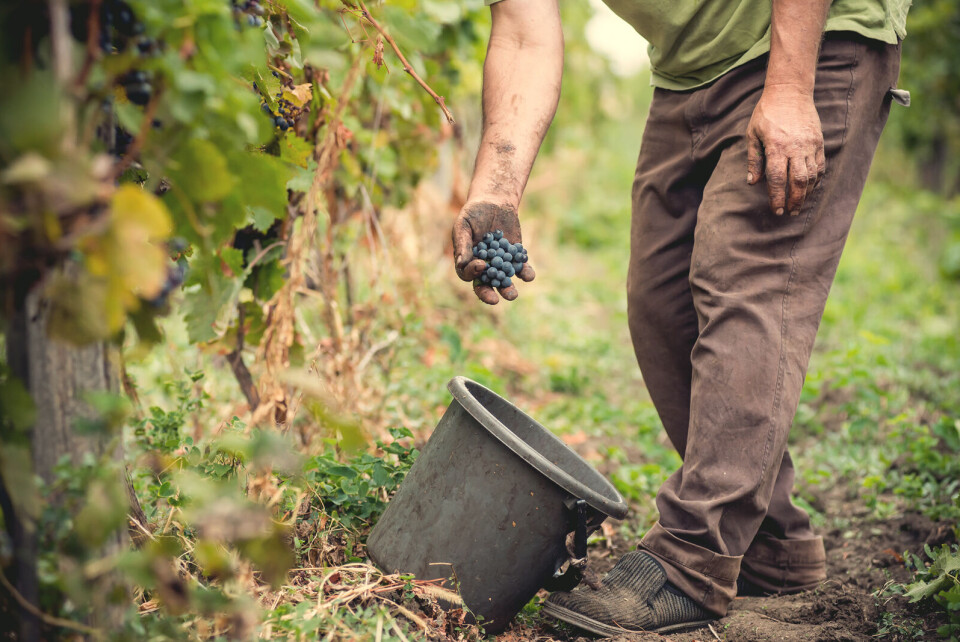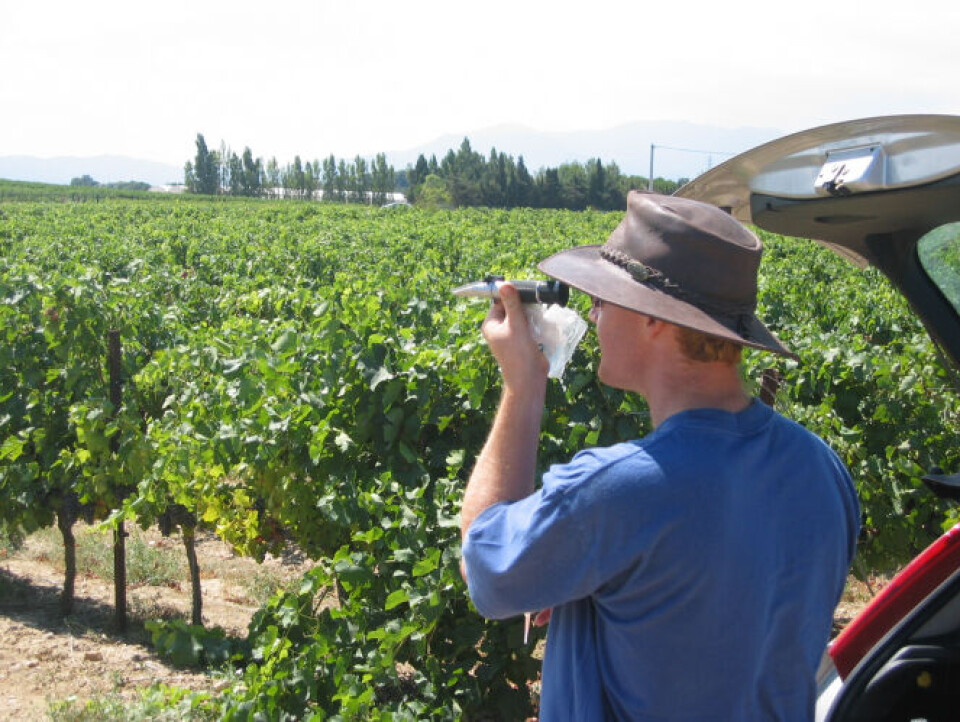-
The origins and meaning of tirer les marrons du feu
As Christmas approaches, we look at a phrase to describe someone who takes advantage of a situation
-
How France plans to help winemakers over problem of too much red wine
Too much red wine may not seem a problem to some – but the sector is experiencing a crisis of overproduction
-
Step back in time for some ‘dinosaur’ planting in your French garden
Captivated in the garden this month by one species of plant that dates back 200 million years, and another which is one of the oldest flowering plant families on the planet
When is the right time for grape picking in France?
One of the most stressful and difficult decisions a vigneron or winemaker has to make is when is the right time to harvest their grapes, writes winemaker Jonathan Hesford

As well as avoiding bad weather, a vigneron or winemaker wants to pick the grapes at perfect ripeness. As grapes ripen they lose acidity and gain sugar. The phenolic ripeness, the development of flavours and tannins in the skins, also needs to be taken into account.
'Grapes are different from many other fruits in that they do not continue to ripen after they are picked from the vine'
Unlike apples or bananas, we cannot leave a bunch of grapes to ripen in a cold store.
Therefore the moment of picking is crucial to making a good wine. Too early and the wines will lack concentration, have astringent tannins and be too acidic; but picking too late will give wines with too much alcohol and not enough acidity or tannic structure.
Only by choosing the right day will the resulting wine be perfectly balanced. Furthermore, it is very hard to tell the ripeness of a grape just by looking at it.
Each grape variety has its own ripening timescale and each vineyard site has characteristics, such as water-retention or inclination towards the sun, which affect that ripening. Therefore it is important to get to know each individual parcel of vines, through measurement of ripeness and historical harvest data.
We assess the ripeness of the pulp by measuring the sugar content using a refractometer. This is a clever but simple device which measures the refraction of light through the grape juice. The more sugar in the juice, the more the light is bent. The refractometer translates that bending onto a scale which gives us the specific density of the juice.

There are several scales used for measuring specific density (just like there are Celsius and Fahrenheit scales for temperature). In France we use the Baumé scale which has the advantage of giving a number that is coincidentally the same as the potential alcohol of the juice. For example, a juice with a Baumé of 13 degrees will produce a wine with 13% alcohol after fermentation.
We measure juice acidity using two methods. The first is to use a pH meter, similar to the ones used to measure the pH of a swimming pool. White wines should have a pH between 3.1 and 3.4 and red wines between 3.5 and 4.0. A lower pH means a higher acidity.
The second method is to titrate the juice against a known concentration of sodium hydroxide. I am sure we can all remember titrations from school chemistry lessons. We add a few drops of indicator to 10ml of the juice and measure how much sodium hydroxide it takes to change the colour of the indicator. That tells us the amount of acid in the wine in terms of grams/litre and is known as titratable acidity (TA).
The amount of acid is not the same as the pH so knowing both of them helps the vigneron see how the acid in the juice is changing and, eventually, how acidic the wine will taste.
To measure phenolic ripeness, most vignerons rely on their own tastebuds by chewing the skins of the grapes as they collect samples. However, sophisticated laboratory equipment can provide figures to assess the amount and type of tannins in the juice (and several other things as well), for those winemakers who know how to interpret the results.
However, no vineyard is homogeneous. Different vines will have bunches of varying ripeness and the grapes within that bunch will also differ. In general, the more bunches a vine grows, the more variation there will be. Vignerons prune their vines in winter and perhaps remove surplus fruit in summer to try to manage the variation while still having a profitable yield.
Terroir also affects variation because fertile soils and more rainfall will give more and bigger bunches of grapes. That is why historically, the best wines come from terroirs which limit the yield, as opposed to producing the most fruit.
'We cannot know the ripeness of the whole vineyard until we have picked the grapes'
We have to take samples to see how the vineyard is ripening and predict the day when it will be at its best. Every year, the harvest date will change depending on the weather.
We can get a rough idea of how early or late it will be from the date of flowering and the date of veraison (when the grapes change colour). When we are within two weeks of the predicted harvest, we start taking samples from the vineyards on a regular basis. I take samples from my vineyards every three days.
There are a number of methods for sampling that aim to give a good representation of the whole vineyard from a small number of samples. I follow a method of walking down a few rows of the vineyard, stopping every 20 paces to collect just five grapes from a bunch that looks typical for that vine. Once I have about 100 grapes, I use those to produce a juice sample.

By looking at the rate of change of the sugar and acidity, and comparing those to previous vintages, I can predict the day when the grapes will be just right. However, temperature and rainfall will skew the ripening. Hotter days speed it up. Rain will initially dilute the berries, making both the sugar and acidity levels fall. A couple of days after rain, the vine typically enjoys a ripening boost.
Not only do we have to take the weather into account when estimating the rate of ripening, we need to look at the forecast to make sure there is no rain due on the day we want to pick. Picking in the rain will dilute the juice a fair amount. Picking after a rainfall will generally allow the vine to take up the water into the grapes, balancing the ripeness.
However, too much rain will cause the grapes to become bloated and dilute and, if it is persistent, lead to botrytis rot. Heavy rain over the harvest can therefore lead to a poor vintage for that region because the vignerons were forced to either pick too early to avoid the rain or pick dilute and possibly rotten fruit.
There are ways to make up for not picking at optimum ripeness. In northern France, wineries are allowed to add a certain amount of sugar to the juice (chaptalisation) whereas in southern regions they are allowed to add tartaric acid if the grapes are over-ripe. Acidity can be reduced by adding calcium or potassium carbonate.
Adding water to the juice or wine is prohibited in France (although perfectly legal and often done in the New World). However, none of these practices makes as good a wine as one made from grapes picked at perfect ripeness.
Related stories
Agen prunes: How a small area of France is world renown for its plums
Quercy speciality saffron is really worth its weight in gold
























